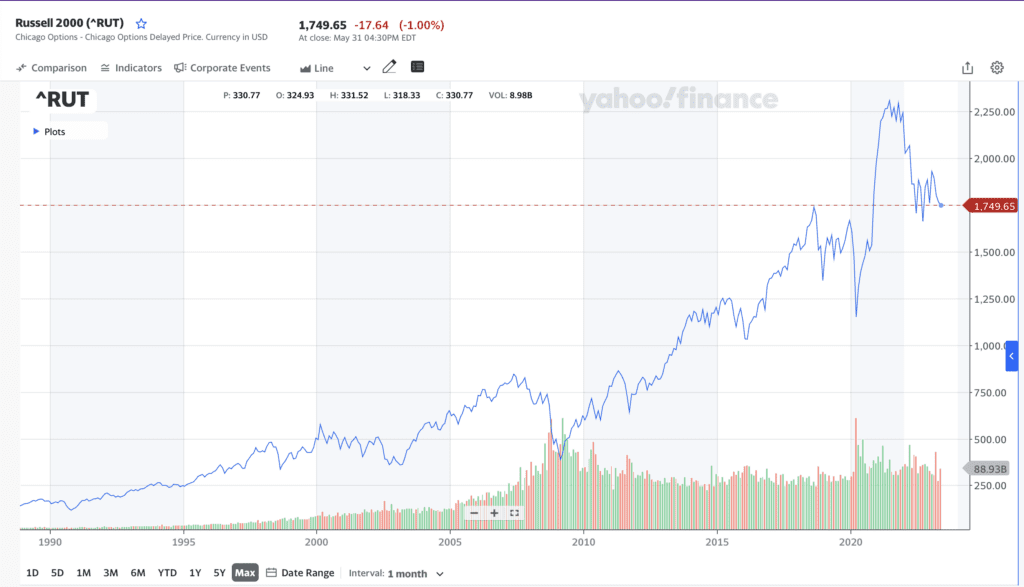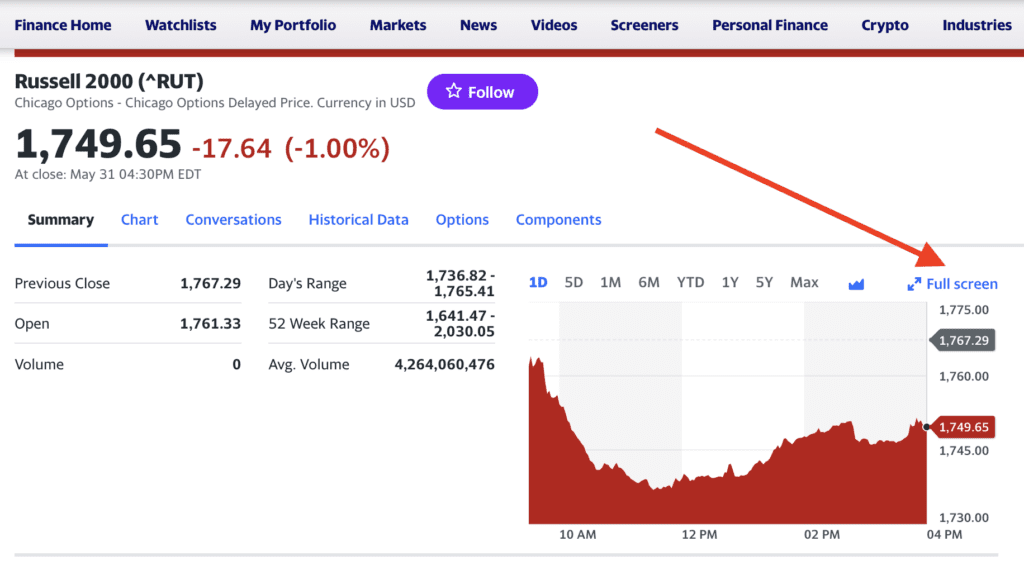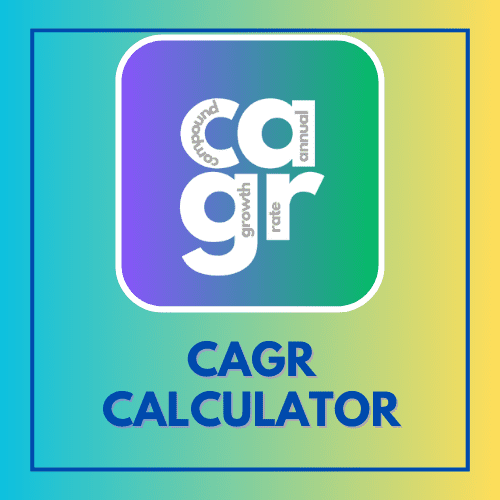The small-cap stock market in the US is generally represented by the Russell 2000 Index, and the small-cap return is measured via Russell 2000 CAGR.
But what is Russell 2000 Index?
The Russell 2000 Index is an index composed of the 2000 small-cap companies that are listed on the stock market in the United States.
The stocks in the Russell 2000 Index are weighted proportional to the market capitalization of the stocks.
The Russell 2000 Index came into being in 1984, and it was introduced by the Frank Russell Company.
Some of the main stocks that constitute the Russell 2000 Index are Super Micro Computer (SMCI), Lattice Semiconductor (LSCC), Shockwave Medical (SWAV), Chesapeake Energy (CHK), Apellis Pharmaceuticals (APLS), Celsius (CELH), etc.
The Russell 2000 Index is maintained by FTSE Russell, a subsidiary of the London Stock Exchange Group.

Russell 2000 Average Return For Last 10 Years: 10 Year Russell 2000 CAGR
Let’s take a look at the compound annual growth rate of Russell 2000 Index over a 10-year period. The period we are considering is May 2013 to May 2023.
In this period we observe that the Index grew from 1164 points to 1750 points, over a period of 10 years.

From 1164 in 2013 to 1750 in 2023
Let’s use our CAGR Calculator to calculate the Russell 2000 CAGR for 10 years.

Putting in the values in the CAGR Calculator, we get the answer that the CAGR of Russell 2000 Index was 4.16% between May 2013 and May 2023.
Read Also:
- Stock Market CAGR Returns: Average Annual Stock Market Returns In Last 30 Years
- def CAGR: How To Calculate CAGR in Python By Defining 1 Easy Function
- Population CAGR: India vs China Population Growth Rate In Last 60 Years
- Dow Jones CAGR: The Compound Annual Growth Rate of Dow Jones Industrial Average
- S&P 500 CAGR: The Compound Annual Growth Rate of S&P 500 Index
- CAGR Formula in Excel: 2 Easy Methods To Calculate CAGR in Excel
- CAGR Formula in Google Sheets: 2 Easy Methods To Calculate CAGR in Google Sheets
Russell 2000 Average Return For Last 20 Years: 20 Year Russell 2000 CAGR
Let’s take a look at the compound annual growth rate of Russell 2000 Index over a 20-year period. The period we are considering is May 2003 to May 2023.
In this period we observe that the Index grew from 441 points to 1750 points, over a period of 20 years.

From 441 in 2003 to 1750 in 2023
Let’s use our CAGR Calculator to calculate the Russell 2000 CAGR.

Putting in the values in the CAGR Calculator, we get the answer that the CAGR of Russell 2000 Index was 7.13% between May 2003 and May 2023.
We have shown two examples here to calculate the Russell 2000 CAGR, but there are an infinite amount of time periods for which you could compute the CAGR. So, let’s take a look at how you can calculate the Rusell 2000 CAGR for any time period.
Russell 2000 Average Return: How To Calculate Russell 2000 CAGR?
Calculating the Russell 2000 CAGR is easy, simply follow the steps below:
Step 1.
Go to Yahoo Finance or Google Finance and search for Russell 2000 in the search bar.

On Yahoo Finance, pick the second result, Russell 2000, with the symbol ‘^RUT’.

On Google Finance, pick the first result, Russell 2000 Index, with the symbol ‘RUT : INDEXRUSSELL’
Step 2.
On Yahoo Finance make the chart fullscreen by clicking on the option above the chart.

In case you get the new style Yahoo Finance chart, the date range picker is located at the bottom of the chart.

In case of old-style Yahoo Finance charts, you will see a date range picker on top of the chart.
In either case, simply pick a date range you’d like.
Right next to it is the ‘Interval’. Pick the interval you’d like on your chart i.e. every data point on the chart should represent a day, week, month, etc.

Google Finance doesn’t allow the users to specify a particular date range, other than the predefined ranges it has – 1 day, 5 days, 1 month, 6 months, Year To Date, 1 Year, 5 Years, and MAX (which goes back to a maximum of 19 years for Russell 2000 Index).
You can pick a date range and hover over the chart to note down the date and values on Google Finance and skip to Step 4.
However, since Yahoo Finance allows more flexibility, we tend to use it more often.
Step 3.
Once you have the chart adjusted for your date ranges, hover over the chart, note down the starting date, and the closing value.
You know the current date, the current value can be obtained by hovering over the chart or simply looking at the top section.

Step 4.
Now you have the starting value (441), ending value (1750), and the time period (20 years). Feed these values in the CAGR Calculator fields – initial amount, final amount, and years respectively. Hit Calculate CAGR, and you have your Russell 2000 CAGR!

Is there a Russell 2000 return calculator?
You can use the online CAGR Calculator as explained in this article to calculate the historical Russell 2000 annual returns.
What is the Russell 2000 average annual return?
The Russell 2000 average annual return depends on the time period we want to observe. For example, as shown in this article, over the 20-year period from 2003 to 2023, we have seen an average annual return of 7.13%. But, during the 10-year period from 2013 to 2023, we have observed an annual average return of 4.16%























